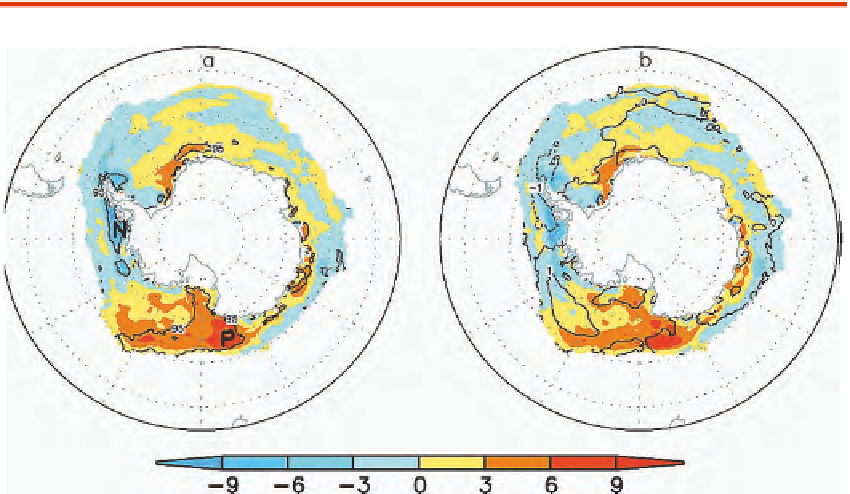Environmental Engineering Reference
In-Depth Information
melt seasons begin earlier and last longer (Serreze et al. (2007). The reduc-
tion in sea ice has occurred concurrently with a general increase in surface
air temperatures over the Arctic Ocean (Comiso, 2003).
Part of this negative trend in Arctic sea ice has been attributed to
natural variability in the atmospheric circulation, which influenced the ice
circulation (Rigor and Wallace, 2004), as well as in ocean heat transport
from the Atlantic (Polyakov et al., 2005) and the Pacific (Shimada et al.,
2006) Oceans. However, natural variability does not account for all of the
trend. Part of it has been attributed to increased atmospheric greenhouse
gas (GHG) loading. Stroeve et al. (2007) suggest that some 33-38% of the
overall observed trend is due to GHG forcing and that for the more recent
period 1979-2006 this value may be as high as 47-57%.
Although the whole Arctic has experienced a trend of decreasing sea
ice extent, trends in Antarctic sea ice extent have a strong regional signal
and have been of opposing sign as demonstrated in Figure 4.12, taken from
Liu et al. (2004).
In the Bellingshausen/Amundsen and western Weddell Seas there have
FIGURE 4.12 Spatial trends in Antarctic sea-ice concentration 1979-2002. (a) Trend before removing the
influence of AAO and ENSO; (b) Trend after removing the influence of ENSO and the AAO. Source: Liu et
al., (2004).

